
- Share via
SAN DIEGO — Rachel Nafis, waist-deep in corncockles, cut the blush-colored flowers growing in her neighbor’s yard as her eyes wandered to the front door.
“I hope Tom comes outside to say hello,” she said as she placed the cut stems in a bucket of water.
Soon, a smile crept across her face as Tom Weaver opened the door and wheeled himself onto the porch.
“It’s so wonderful to see flowers growing outside my window,” he said from his wheelchair. “I love seeing them. They smell so good.”
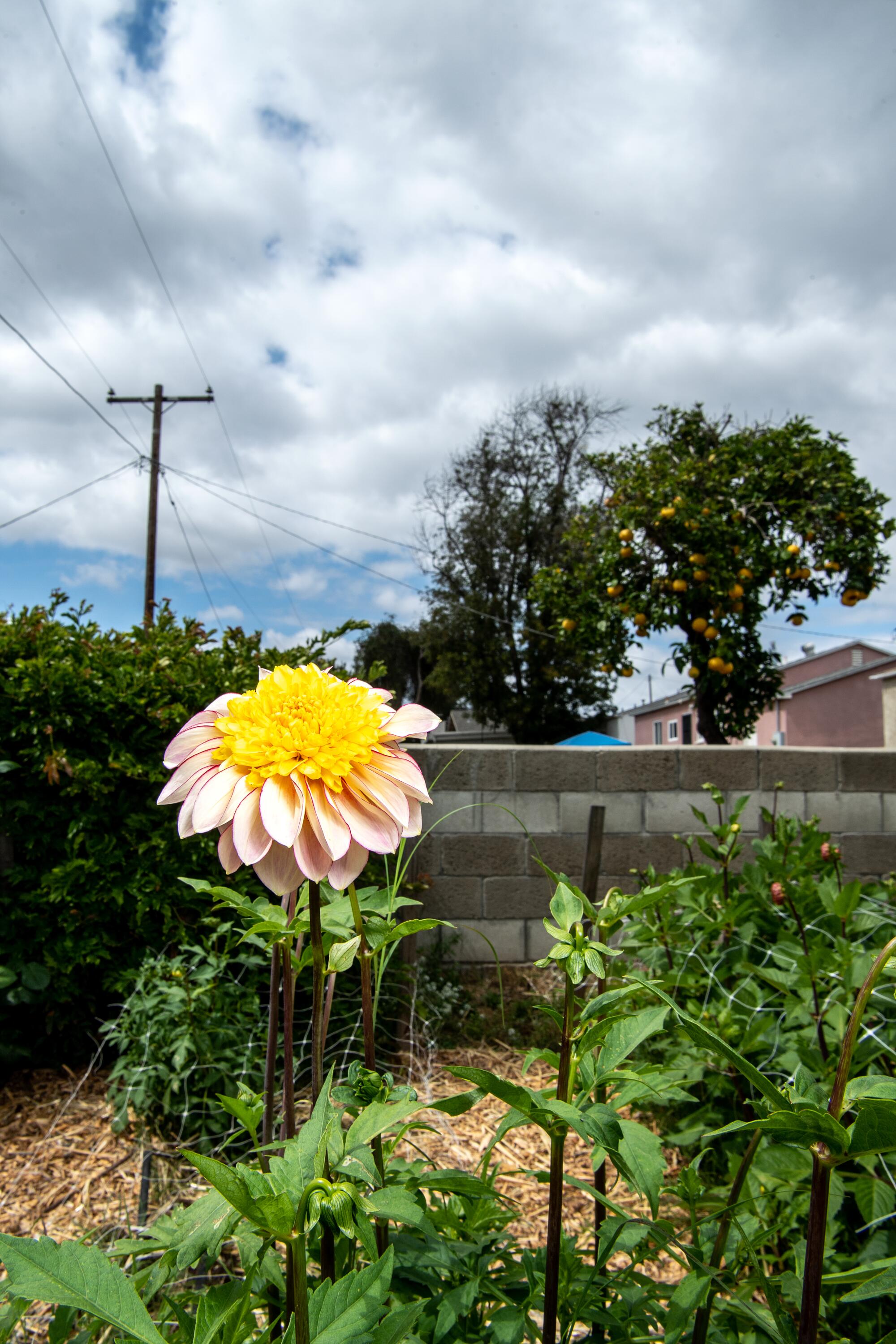
For three years, Nafis, a one-woman florist, has grown sunflowers, dahlias and corncockles outside Weaver’s home, one of eight neighbors who have donated their yards to Psalter Farm Flowers, a loose collective of cutting gardens that is a draw with San Diego flower shops, event florists and bouquet lovers.
Not surprisingly, the flowers burst out of yards in various states of bloom due to the seasons. Around the corner from her home base, across the street from Webster Elementary School in City Heights, yellow and pink strawflowers and delicate blue scabiosa pincushions grow tall in raised beds.
A quarter mile in the other direction, pink bellflowers and the conclusion of fragrant sweet peas grow in neat rows behind the rental home of Sophie Thompson.
“All of my gardens are in places where people cannot care for their yards the way they would like,” said Nafis, 36. She also cultivated the alley behind her 800-square-foot home. “I feel I’m adding value to their homes and our neighborhood.”
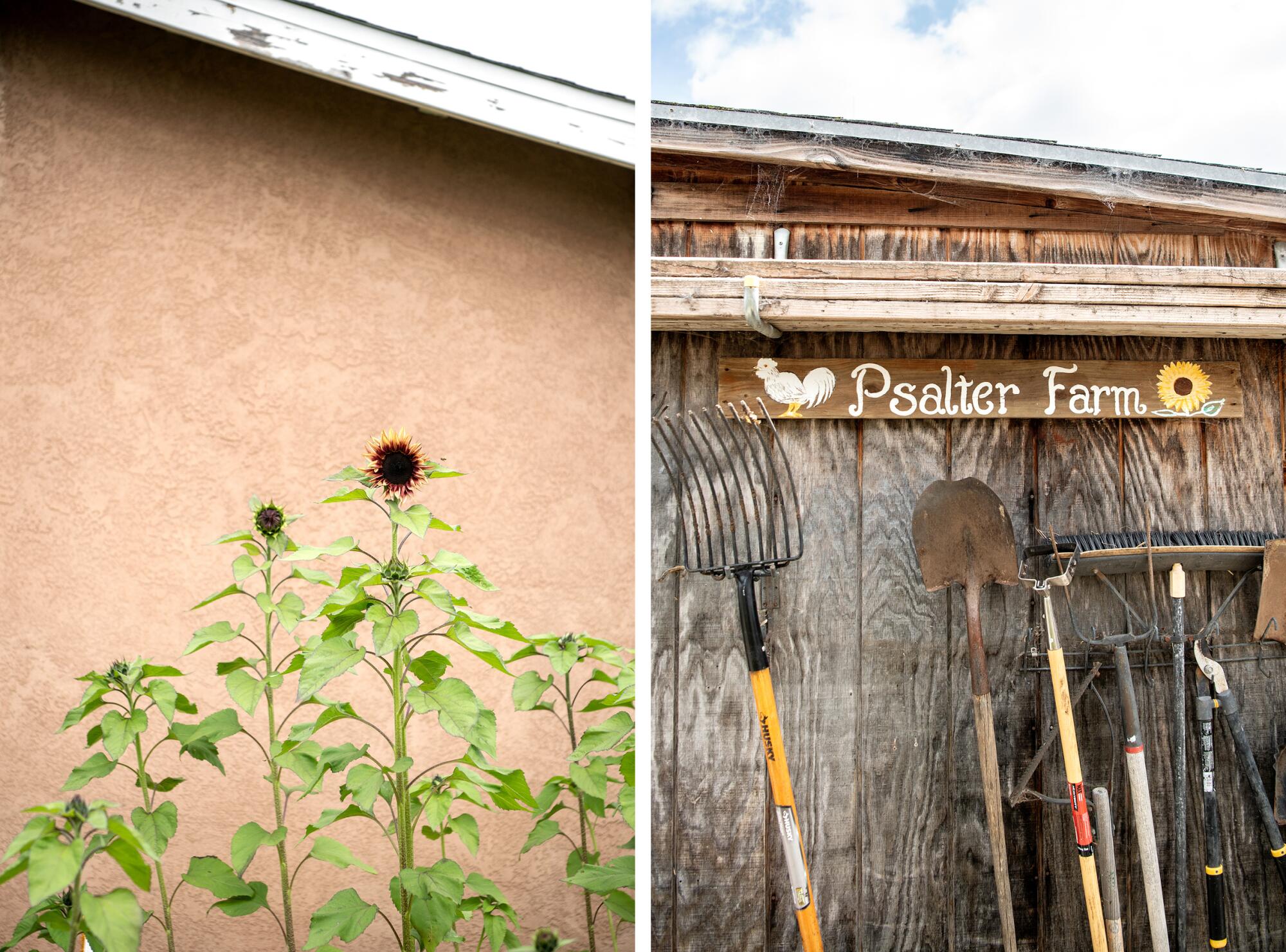
Thompson agreed. “I don’t know much about farming itself, but I’m impressed how Rachel has increased the biodiversity,” she said of the neighborhood, which is among San Diego County’s poorest. “There is less infrastructure and greenery, fewer markets and more liquor stores here. But she’s taught us that all neighborhoods can be beautiful.”
Mindful of trends but not beholden to them, Nafis prefers growing seasonal flowers that speak to her. “I like fragrant flowers like roses, sweet peas and scented geraniums,” she said of the flowers blooming in her front yard and backyard. Right now, the cool season flowers — snapdragons, strawflowers, sweet peas and poppies — are transitioning to ranunculus and anemones and summer annuals like dahlias, zinnias and cosmos. “I try to grow things that don’t ship well,” she said. “Most florists are getting things imported from out of the country. I like to grow things that would get damaged in shipping or not last that long and florists would like to source locally.”
To passersby, the colorful cutting gardens stand out against the lawns, many of which have turned brown after California was asked to cut back on water during the drought.

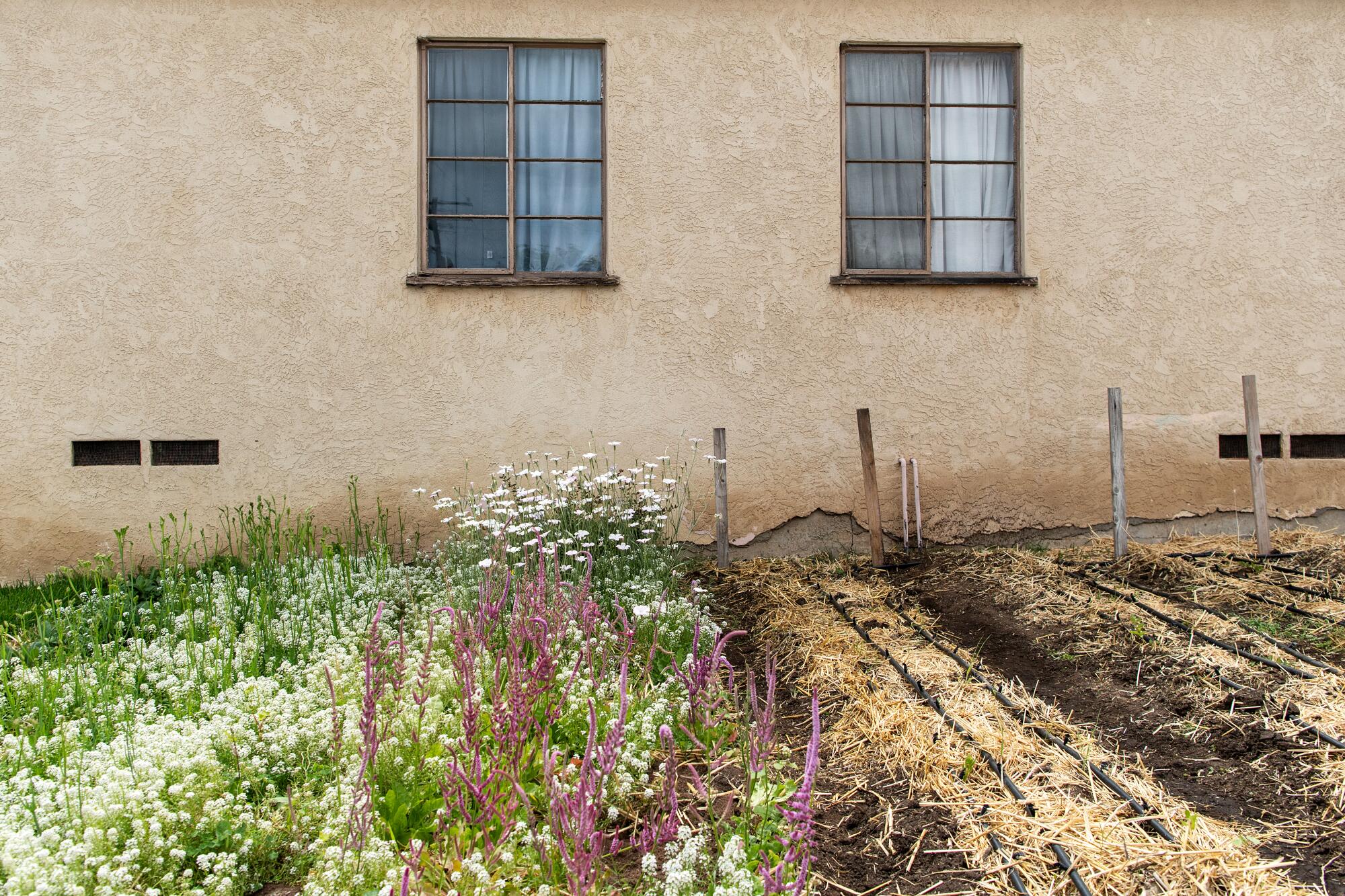
Conserving water is important to Nafis, who subsidizes many of her neighbors’ water bills. “We have everything on a drip system and timers,” she said. “I also use a lot of mulch, which helps to retain water and take care of my soil.”
Although she likes working alone, Nafis’ quiet presence resonates throughout the neighborhood. Shortly before Weaver’s brother, Don, died in 2021, the family moved his hospital bed next to the window so that he could watch Nafis working in the garden.
“It’s extraordinary to be present and so deeply a part of the neighborhood,” she said of the neighbors, dog walkers and parents who greet her as she walks from house to house with her flower buckets and shears.
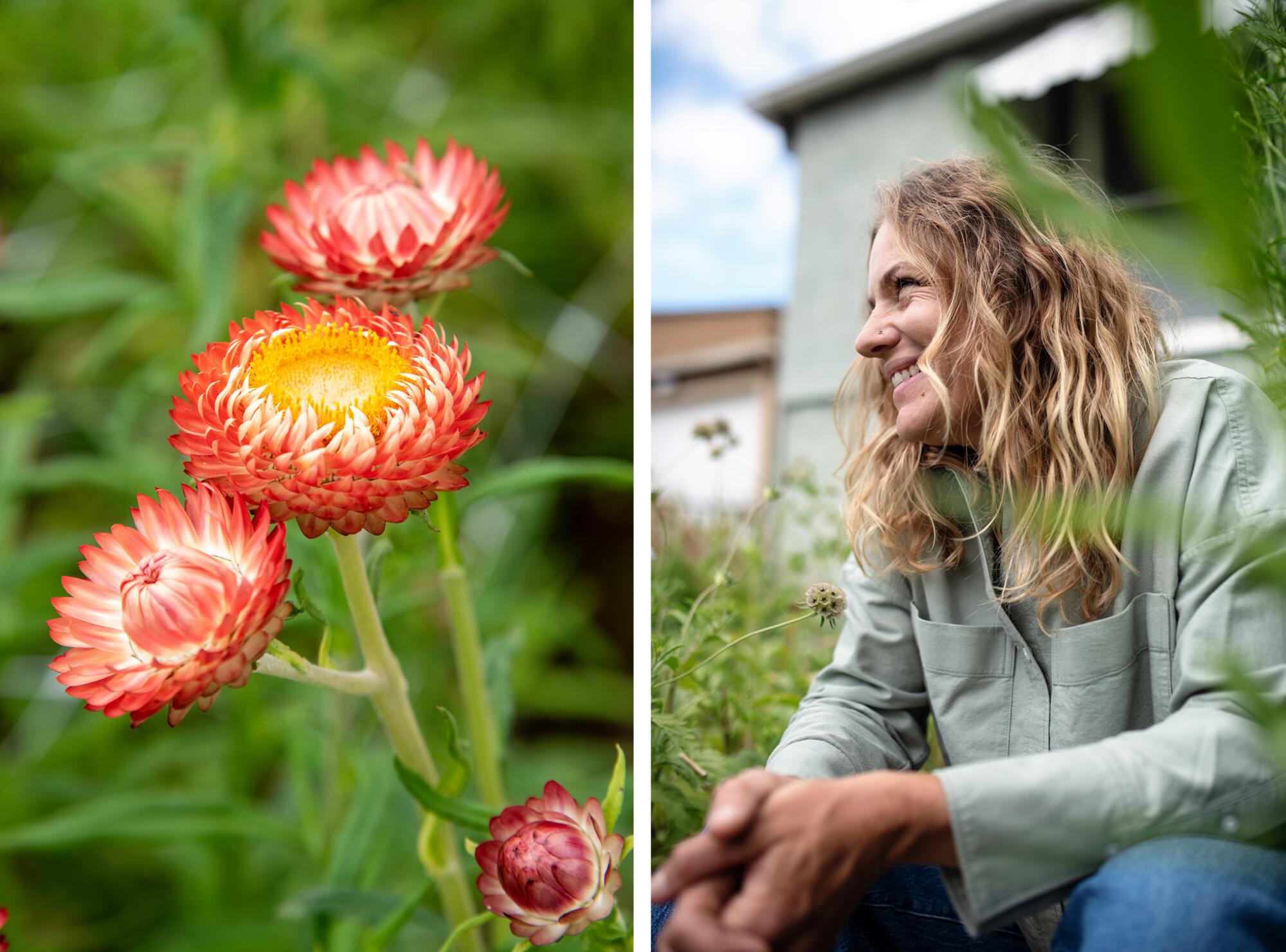
“These have been meaningful life relationships. We’ve had two people pass away since I started this,” she said, her voice breaking. “When you open yourself up to relationships, it can be messy, but I think you can also be amazed by the good things that can happen. My business model is very fragile but not as fragile as you might think. I’m not leasing land with a farm with a five-year commitment. I think that would be ideal, but that’s not a possibility. We couldn’t afford it, but we are grateful to own our house and be able to make a living through this creative shared-land model.”
“All the neighbors know who she is,” said Kristen Kellogg, a nurse practitioner who donated her yard. “We have five sisters in the neighborhood who live in three houses, and when their mother passed away, Rachel was able to make arrangements for them. They knew the flowers were from Rachel, which meant a lot to them.”
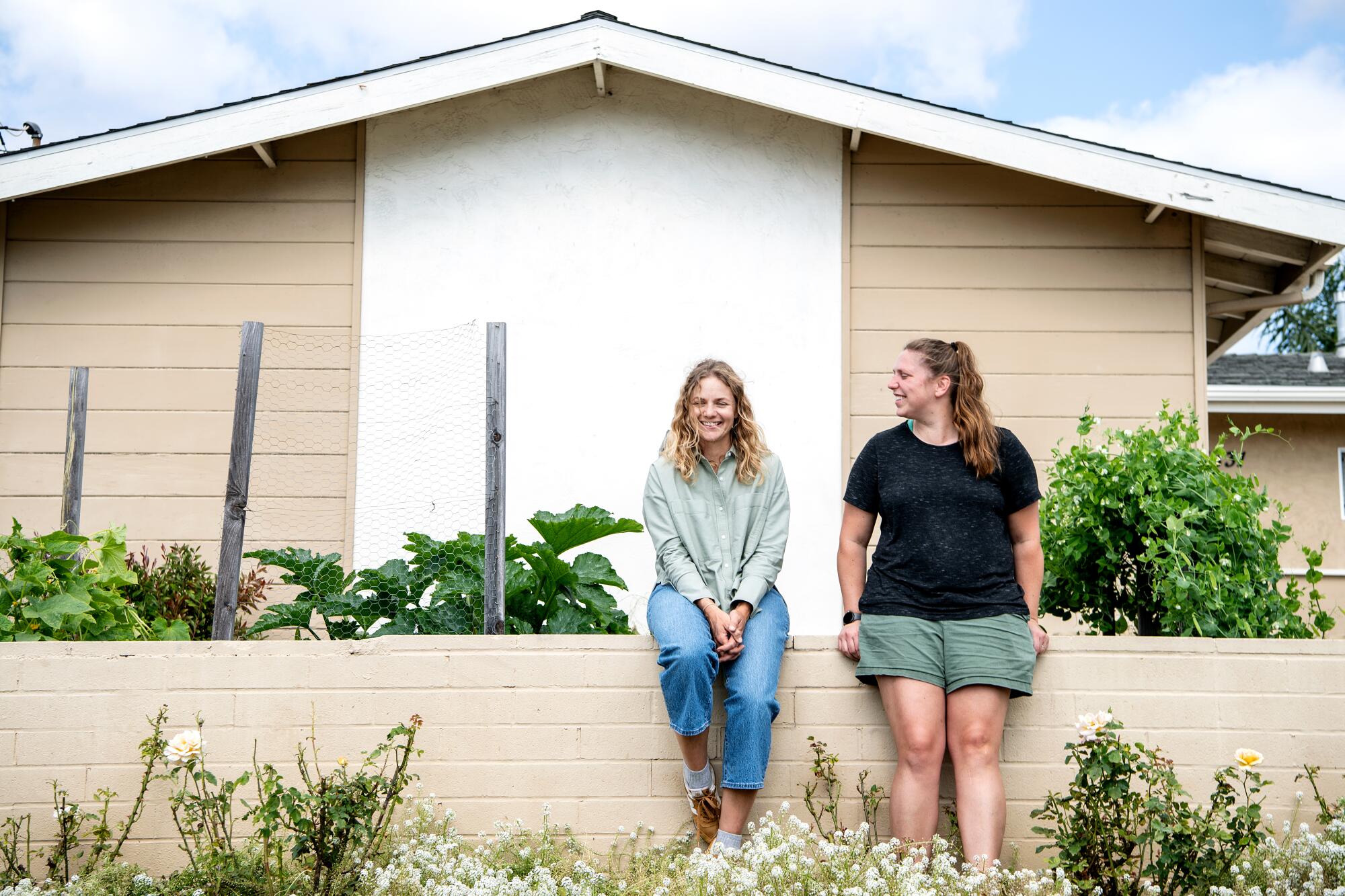
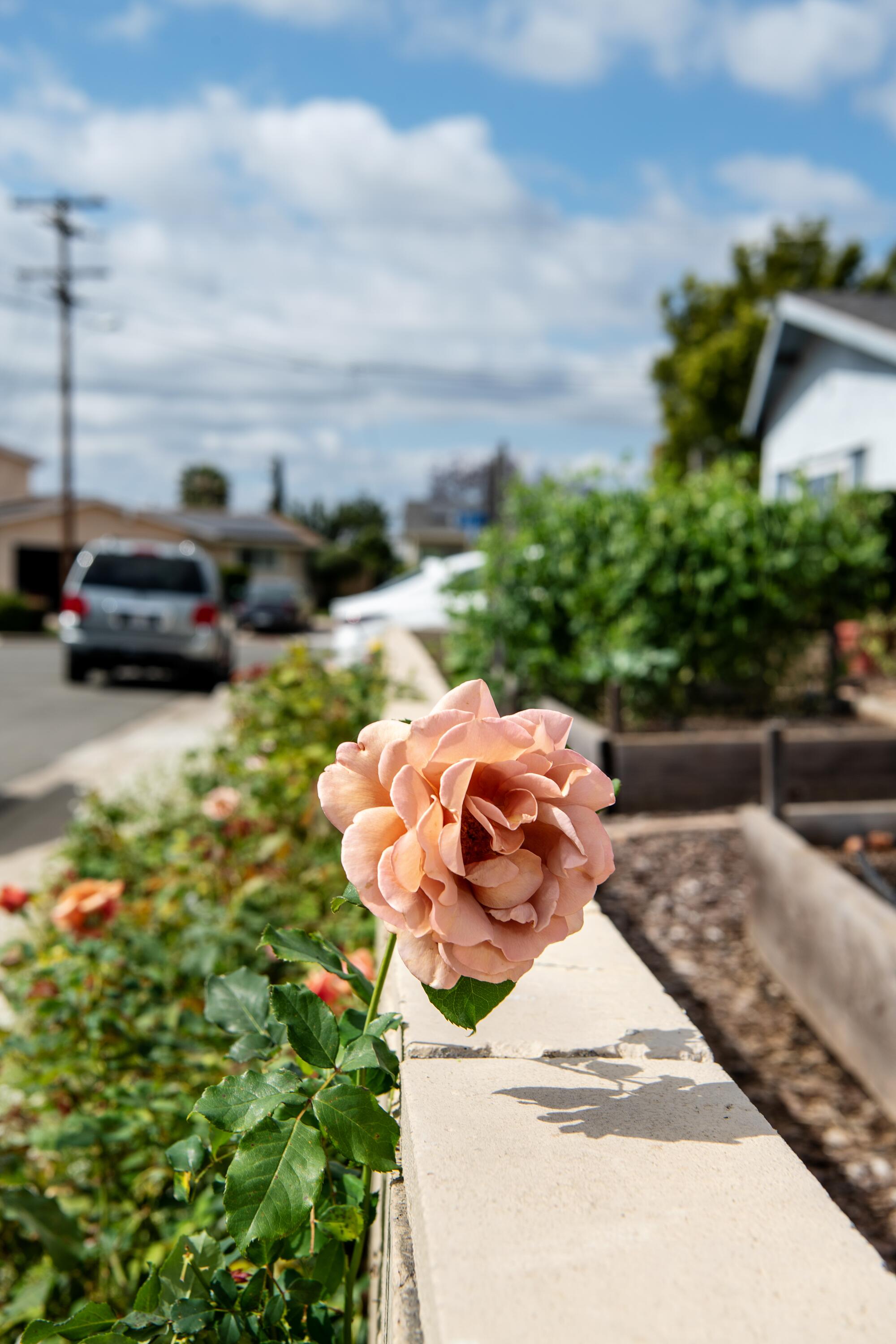
At a time when many people feel isolated and alone, Nafis dropped a written request in Thompson’s mailbox, asking if she could use her yard. “She has become a good friend,” Thompson said. “I have been in and out of some hard transitions, and I have texted her late at night and even asked her if she could come over and help me move a king-sized mattress.”
Nafis, a mother of three young boys, grew up in western Michigan and worked as an ER nurse for 13 years before leaving the profession during the COVID-19 pandemic.
“It was tough,” she said of working as an emergency room charge nurse during the pandemic. “My kids were all home, and my husband’s workload increased. The hospital was asking me for more hours. I was burned out. We both worked multiple jobs for many years and decided we couldn’t do it anymore. Changing careers was challenging and such an identity shift from nursing to farming. It was like low-wage manual labor at times. But I couldn’t have imagined doing anything else when we were at a breaking point. I enjoy what I’m doing now.”
Given her small-business success — she’s doubled the farm’s annual revenue every year since its inception in 2019 — Nafis notes that she and her husband, Chris, a pastor, failed miserably in their previous attempts at farming a small community-supported agriculture farm on a vacant lot in Lemon Grove in 2012 and a 45-acre ranch in Jamul in 2013.
“Everything was eaten by rodents in Jamul,” she said. “We lived in a trailer and were both working our day jobs. Anything that was a success was eaten. Even though it was difficult, I think it has been a part of my success.”
In 2014, the couple purchased their home in City Heights and, when not working, tended to a vegetable garden and chickens (that were leftovers from the Jamul ranch). When she planted a row of dahlia tubers in her vegetable garden, she fell in love with the gorgeous ball-shaped blooms, which when cut, would last a week in water. Soon, she decided to experiment with traditional farming, turn her backyard into a cutting garden, and use her neighbors’ yards as satellite farms.


“The model I have created is very relational-based,” she said. “Every house is different based on my relationships with my neighbors.”
As she walks through the neighborhood, the flowers are a touchstone that connects her to neighbors and elevates her mood. “I often experience euphoria working with beautiful flowers all day,” Nafis said. “I also appreciate that flowers are appropriate to mark every occasion, from grief and loss to heart-bursting celebration, to long difficult days that drag on forever.”
Nafis thinks her business model resonates with her clients because they care about the environment. “I don’t use any chemicals,” she said. She also uses a no-till method that conserves water, feeds the soil and creates a natural habitat for birds and beneficial insects. “Sustainability matters to people,” she added.
The other allure of buying locally grown flowers is the exceptional quality of freshly picked blooms. “There is a real vibrancy when flowers are picked 12 to 24 hours before purchase,” Nafis said. To illustrate this, she collected a chocolate-scented geranium and invited a sniff. “That’s what flowers lose in shipping,” she said.
Nafis also can grow flowers her clients can’t easily find anywhere else. “You can only get corncockle at a local farm,” she said. Other rarities include Iceland poppies, garden roses, foxgloves and lisianthus.

In September when the summer season ends, Nafis will take a break and tend to the soil.
“It’s hard for me to manage, even though I get better every year,” she said. “Plants are living things, and so many different variables are involved: losses to insects and rodents, succession planting. The cutting of flowers is labor-intensive because they need to be cut twice a week, and that never ends. Even when I’m not selling, I need to deadhead the flowers so they don’t go to seed.”

The hard work has taught her to create boundaries for herself such as inviting her subscription clients to pick up their bouquets on her front porch instead of driving all over San Diego to deliver them herself. But for her neighbors, the close bonds remain.
“She has made such an impact on the neighborhood,” Kellogg said. Flowers may be transient, but friendships can last a lifetime.
“Yes, she’s a florist,” she said. “But it’s about a lot more than just flowers.”
More to Read
Sign up for The Wild
We’ll help you find the best places to hike, bike and run, as well as the perfect silent spots for meditation and yoga.
You may occasionally receive promotional content from the Los Angeles Times.












